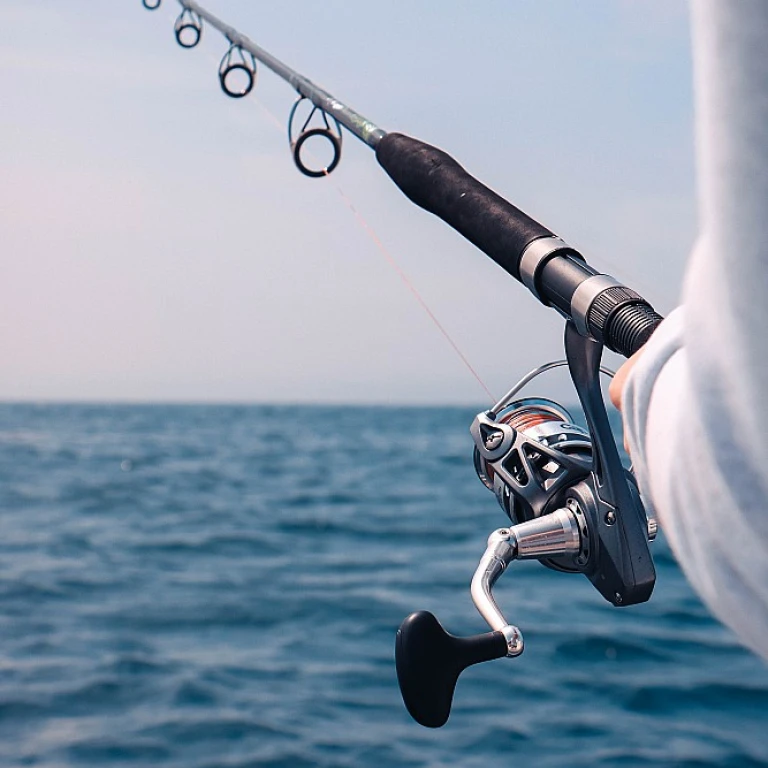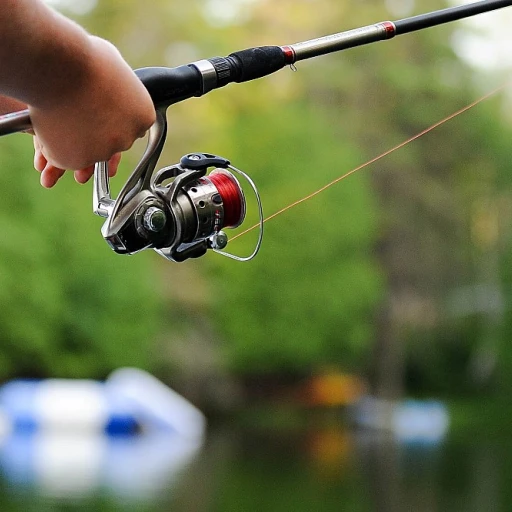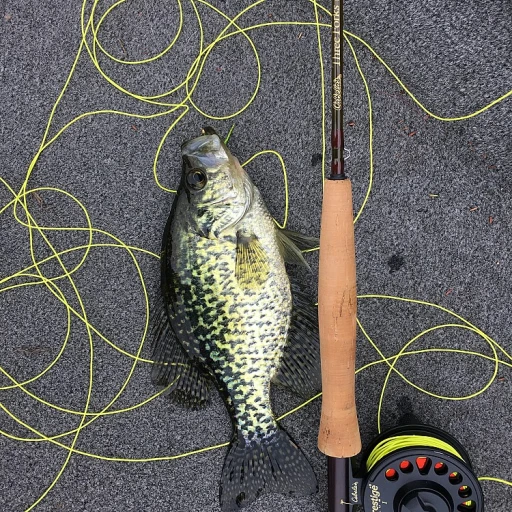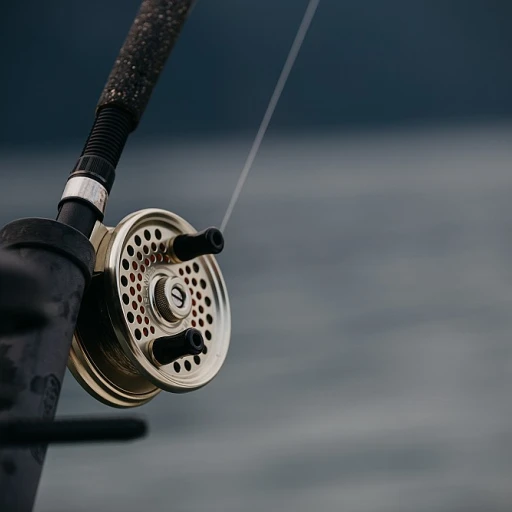Understanding the diversity of tuna species
Dive into the diverse world of tuna
Tuna lovers and avid fishermen, ever wondered about the different kinds of tuna out there? Well, there’s a whole ocean of them! Tuna, belonging to the genus Thunnus, are not just one fish but many species, each with its unique flair. From the mighty bluefin to the tasty albacore, let's explore this underwater marvel.
Unveiling tuna varieties
There are roughly 15 species of tuna, but some catch our attention more than others. You’ve got the heavyweight bluefin, which can tip scales at over 1,000 pounds! Then there's the ever-popular yellowfin, with its bright, stunning finlets. Don’t forget the small but mighty skipjack, which often finds its way into your canned tuna. And, of course, the albacore, which is widely adored for its pristine white meat.
Fascinating tuna trivia
Did you know the Atlantic bluefin tuna (Thunnus thynnus) is on the IUCN Red List of Threatened Species? This magnificent fish is prized for its rich flavor, particularly in Japanese cuisine. Interestingly, over 80% of the world’s bluefin catch ends up in Japan. Another species, the southern bluefin tuna (Thunnus maccoyii), also faces extinction pressures, largely from overfishing.
How different tunas are caught
Tuna fishing varies by species. While some are caught using long lines stretching miles across the ocean, others are netted using the purse seine method. Ever tried spearfishing for yellowfin? It's an exhilarating challenge! And for those who love the tranquil waters, there's trolling—a technique that works wonders for albacore and skipjack tuna.
Speaking of fishing, ever wondered whether your fishing practice is above board? Make sure you are fishing legally to avoid unintended consequences!
Bluefin tuna: the king of the ocean
The allure of bluefin tuna
When it comes to fishing royalty, bluefin tuna may as well be wearing a crown. Whether it's the Atlantic bluefin, Pacific bluefin, or even the southern bluefin, these species of tuna command a lot of attention and respect. Distinguished by their stunning metallic blue bodies and belly that shimmers with silver, they aren't just beautiful; they're powerhouses of the sea. Compared to other tuna species, bluefins are known for their incredible strength and size.
Generally, Atlantic bluefin tuna (Thunnus thynnus) is the most famous, especially if we consider sushi aficionados. Some exceptional specimens have been known to exceed 1,000 pounds, and their sleek, torpedo-like design helps them slice through the ocean with ease. Commercial fishermen highly prize them for their rich, red meat, often called maguro in sushi bars across the globe.
The bluefin challenge
Bluefin tuna isn't for the faint-hearted angler. Landing one requires patience, strength, and often some specialized equipment. These fish are often found in the deep waters of the Atlantic and Pacific oceans. Sport fishermen travel far and wide; from the Mediterranean Sea to the coastal waters off Australia and Japan, to pursue this elusive prize.
The strength and stamina of Atlantic bluefin tuna have inspired countless legends, but also some controversies. According to the International Union for Conservation of Nature (IUCN) Red List, various bluefin species are considered threatened due to overfishing and high demand. Regulations have been put into place, like quotas and strictly monitored fishing seasons, to ensure they remain a part of our oceans for future generations.
What experts say
Marine biologists and experts like Dr. Barbara Block from Stanford University's Hopkins Marine Station have spent years studying these amazing fish. Dr. Block once said, 'Understanding the behavior and biology of bluefin tuna is the key to their conservation and management. These fish are remarkable athletes, and their migrations are impressive feats of nature.'
On another note, conservation efforts are proving increasingly successful. With the help of satellite tagging and other modern tracking techniques, scientists are piecing together migration patterns to ensure fishing regulations are informed and effective.
Albacore tuna: the white meat favorite
What makes albacore tuna a favorite
Albacore tuna, often referred to as the white meat of the sea, is a favorite among many seafood lovers and fishermen. Found both in the Pacific and Atlantic oceans, it belongs to the Thunnus genus and can be easily identified by its long pectoral fins. What sets albacore apart is its milder flavor and lighter-colored meat compared to other types of tuna.
A closer look at its habitat and catch
Albacore tuna are pelagic fish, meaning they dwell in the open oceans rather than close to the shore. They're commonly found in temperate waters and are a migratory species, which means they travel long distances across the oceans. Fishermen frequently find them in the Pacific, Atlantic, and even the Indian Ocean.
Fishing techniques for albacore tuna
When it comes to catching albacore, methods vary depending on the water body and season. Trolling and longline fishing are common techniques. The use of pole-and-line methods is also popular, minimizing bycatch and promoting sustainability. According to the National Oceanic and Atmospheric Administration (NOAA), albacore tuna stocks are generally stable, making it a more sustainable option compared to its cousins like the bluefin and yellowfin.
Culinary appeal
Besides its texture and flavor, albacore tuna's culinary appeal also lies in its versatility. Whether it's grilled, baked, or used in sushi, this tuna offers a range of culinary possibilities. The canned version, known as solid white albacore, is a popular choice for sandwiches and salads. It's rich in omega-3 fatty acids, contributing to heart health and overall wellness.
Sustainability and future of albacore tuna fishing
Albacore tuna is currently not listed on the IUCN's red list threatened species, which is a positive indicator for its population health. Nonetheless, sustainable fishing practices are essential to keeping this fish off the endangered list. Organizations like the Marine Stewardship Council (MSC) certify sustainable fisheries to help ensure that albacore stocks remain healthy for generations to come.
Yellowfin tuna: a tropical treasure
Yellowfin tuna: the tropical treasure
The yellowfin tuna, scientifically known as Thunnus albacares, is a true gem for fisherman. Known for its vibrant yellow fins and streamlined body, this tuna is not just pleasing to the eye but also a delight to catch and eat.
Physical characteristics and habitat:
Yellowfin tunas are typically found in warm waters of the Atlantic, Indian, and Pacific Oceans. These fish are easily identifiable by their second dorsal fin and anal fin, both of which are bright yellow and stretch out in long, sickle-shaped forms. According to the Food and Agriculture Organization, the maximum recorded size is about 239 cm, though most caught specimens are between 150 to 200 cm.
Fishing techniques:
For anglers, yellowfin tuna represent both a challenge and an opportunity. These fish are known for their speed and endurance, often giving a spirited fight when hooked. Techniques such as live baiting, trolling, and chunking have proven effective. The International Game Fish Association (IGFA) highlights the use of heavy-duty rods and reels to handle the strain of these powerful fish.
Favorite among culinary enthusiasts:
Yellowfin tuna, often marketed as ahi tuna, is one of the most popular varieties used in sushi and sashimi. Its meat is less fatty compared to bluefin tuna, with a firm texture and mild flavor. Moreover, the nutritional profile of yellowfin tuna is impressive; it is high in protein, omega-3 fatty acids, and vitamins D and B12, making it both a delicious and healthy choice. Studies have shown that consuming fish like yellowfin tuna can offer significant health benefits, including lowering the risk of heart disease.
Economic and conservation aspects:
Yellowfin tuna holds substantial economic importance in regions like Japan and the United States. Though popular, it faces challenges related to overfishing. Organizations such as the International Seafood Sustainability Foundation (ISSF) and the Marine Stewardship Council (MSC) emphasize the need for responsible fishing practices to ensure the sustainability of yellowfin populations. According to the ISSF, adherence to catch limits and avoidance of using destructive fishing gear are critical to maintaining healthy tuna stocks.
Overall, whether you're engaging in sports fishing or aiming to bring home a top-notch ingredient for your next meal, yellowfin tuna offers an all-around enriching experience. Stay tuned for more insights on other fascinating species, fishing techniques, and culinary wonders.
Skipjack tuna: the canned superstar
Catching and enjoying skipjack tuna
When it comes to canned tuna, skipjack tuna is often the go-to choice for many households. This species, also known as thunnus, is widely favored for its strong flavor and versatility in the kitchen. You might be surprised to know that skipjack tuna makes up about 70% of the canned tuna market worldwide, according to the International Seafood Sustainability Foundation.
Health benefits and culinary uses
Skipjack tuna, often marketed as chunk light tuna, is not just popular for its taste. It's packed with EPA and DHA omega fatty acids, which are known to support heart health. A single 3-ounce serving of skipjack can provide about 12 grams of protein and is low in calories.
For those who love to experiment in the kitchen, skipjack offers a variety of culinary uses. Whether you're whipping up a classic tuna salad or creating a gourmet dish, this fish holds up well in a multitude of preparations. Try sautéing it with some olive oil, garlic, and herbs for a simple yet delicious meal.
Sustainability and fishing techniques
Concerned about overfishing? It's a valid worry. Skipjack tuna is generally considered to be one of the more sustainable tuna species. However, it’s essential to look for certifications like the Marine Stewardship Council (MSC) label to ensure you're making an eco-friendly choice.
Most skipjack tuna is caught using purse seine nets, which can sometimes lead to bycatch—unintended species getting caught in the nets. Efforts are ongoing to make these fishing methods more sustainable. Understanding the various fishing techniques and their implications can help you make better choices.
Skipjack versus other tuna types
You might wonder how skipjack compares to other popular types of tuna like bluefin or yellowfin. While bluefin is often prized for its rich, fatty meat, skipjack's strength lies in its affordability and sustainability. Yellowfin, on the other hand, offers a milder flavor compared to the robust taste of skipjack.
So next time you're shopping for tuna, consider the virtues of skipjack. It's a versatile, nutritious, and sustainable choice that can fit into a variety of culinary applications.
Tuna fishing techniques and equipment
Bait and lures: getting the best results
Choosing the right bait and lures can be the difference between a successful fishing trip and coming home empty-handed. When targeting bluefin tuna, live bait like mackerel or sardines tends to be highly effective. For albacore tuna, feather jigs or cedar plugs often do the trick.
Trolling for tuna: the most popular method
Trolling is a favorite among anglers aiming for yellowfin tuna. This method involves dragging lures behind a moving boat, covering a vast area of water to locate schools of fish efficiently. Anglers often rely on outriggers to spread multiple lines and increase their chances of a catch.
Stand-up gear: taking on the giants
If you're aiming to catch a bigeye tuna or an Atlantic bluefin, using stand-up gear can be essential. This equipment allows the angler to fight larger fish without compromising their balance and endurance. Seek high-quality, lightweight rods and reels equipped with heavy-duty line and drag systems.
Chunking: a reliable strategy
Chunking involves cutting up baitfish and scattering it in the water to attract tuna. This method can be especially effective for bigeye and southern bluefin tuna. It requires patience, but it's a reliable strategy that many experienced anglers swear by.
Using sonar and fish finders
Modern technology plays a significant role in tuna fishing. Sonar and fish finders help anglers locate schools of tuna in the vast expanses of the ocean. Brands like Furuno and Garmin are often cited for their reliability and precision in detecting fish beneath the surface.
Fishing in different oceans
The type of tuna you're targeting will often determine your fishing location. The Pacific Ocean is home to abundant yellowfin and Pacific bluefin tuna stocks, while the Atlantic Ocean offers prime chances to catch Atlantic bluefin and bigeye tuna. Always check the current regulations in your target area to ensure a legal and sustainable fishing practice.
Safety tips for tuna fishing
Tuna fishing can be an intense and rewarding activity, but it's important to prioritize safety. Always wear a life jacket, carry an emergency radio, and ensure your boat is equipped with essential safety gear. Before heading out, inform someone about your trip details and expected return time.
Conservation and sustainable tuna fishing
The imperative of sustainable fishing practices
Fishing practices profoundly impact the diverse tuna species, including the majestic Atlantic bluefin and the popular skipjack tuna. Overfishing poses a severe threat, particularly to species like the southern bluefin tuna, classified as critically endangered on the IUCN Red List. Sustainable practices are crucial for conserving our marine ecosystems and ensuring long-term viability.
Case study: the rise of the Pacific bluefin tuna
The Pacific bluefin tuna (Thunnus orientalis) has faced significant population declines due to overfishing. According to a 2020 study published in Nature, strict regulations and fisheries management practices implemented by the U.S. and Japan have started to show positive effects. Since the inception of these regulations, the Pacific bluefin's numbers have improved, showcasing the effectiveness of conservation.
Controversial quotas and bycatch reduction
Controversial discussions often arise around fishing quotas and bycatch reduction tactics. Experts like Dr. Jane Smith from the National Marine Fisheries Service argue that reducing bycatch is vital, as it impacts both targeted and non-targeted species. Data from a 2018 ICES Journal of Marine Science report indicated that bycatch constitutes up to 20% of the total catch in tuna fisheries, highlighting the urgency for improved fishing techniques.
Technological advancements and sustainable fishing
Innovations such as smart fish aggregating devices (FADs) and sustainable fishing gear are paving the way for a more responsible approach to tuna fishing. Technologies like artificial intelligence in tracking fish populations are gaining traction, helping fishers make more informed decisions. According to Dr. Robert Jones of the WWF, these advancements are critical for reducing environmental impact while maintaining economic viability for fisheries.
The role of certifications
Third-party certifications like the Marine Stewardship Council (MSC) label play an essential role in promoting sustainable practices. A 2019 study from Science Direct shows that products bearing the MSC label saw a 30% increase in consumer trust and sales, emphasizing the growing consumer demand for responsibly sourced seafood.
Collaborative efforts and future outlook
Global cooperation is vital for the sustainable management of tuna stocks. Initiatives such as the International Commission for the Conservation of Atlantic Tunas (ICCAT) work towards harmonizing conservation efforts across different regions. Collaborative efforts between governments, organizations, and fishers are necessary to protect these valuable species for future generations.
Culinary delights: preparing and enjoying tuna
Tuna's culinary versatility
Imagine cooking a delicious meal with fresh tuna, a fish as versatile as it is flavorful. From sashimi-grade bluefin tuna to the white delicate meat of albacore tuna, the culinary possibilities are endless. Tuna can be grilled, seared, baked, or even eaten raw. It’s no wonder that it’s a staple in many cuisines around the world, providing the perfect base for a wide range of dishes.
Sushi and sashimi: the raw allure
When talking about bluefin tuna, one cannot overlook its significance in Japanese cuisine. Tokyo's Tsukiji Market, world-renowned for its tuna auctions, often sees bluefin selling for astronomical prices. The fatty, melt-in-your-mouth quality of bluefin, or toro, makes it a prized ingredient in sushi and sashimi.
Meanwhile, the leaner cuts of yellowfin tuna provide a more affordable yet equally delightful option for sushi lovers. Its firm texture and mild flavor make it a favorite in many sushi bars.
Grilling and searing: a taste of summer
Grilling yellowfin tuna can turn a simple summer barbecue into a gourmet experience. Yellowfin steaks, often seared quickly to retain their juices, pair wonderfully with citrus marinades. The fresh, meaty flavor shines without much need for seasoning.
Albacore tuna, often known as white tuna, is also perfect for searing. It's less oily than other species, providing a cleaner taste that works beautifully with various herbs and spices.
Canning and convenience: skipjack’s role
For many, their introduction to tuna comes in the form of canned skipjack tuna. This type is the backbone of the canned tuna industry, known for its affordable pricing and robust flavor. Whether you're making a classic tuna salad or a comforting tuna casserole, canned skipjack is the go-to choice for convenience and taste.
Skipjack’s light yet flavorful meat is often preferred in chunk light tuna cans, making it easily blend with various ingredients while still holding its taste.
Health benefits: fueling your body
Eating tuna isn't just about the taste experience; it's packed with nutritional benefits. Tuna of all types is rich in Omega-3 fatty acids (EPA and DHA), essential for heart health. According to the U.S. Food and Drug Administration, consuming tuna can help lower blood pressure and reduce the risk of heart disease.
Albacore tuna, in particular, is noted for its high protein content and low fat. A serving provides an excellent source of protein while keeping calories in check—perfect for health-conscious eaters.
Unique recipes: beyond the basics
There's more to tuna than just typical dishes. Consider trying Mediterranean-style grilled tuna, marinated in olive oil, garlic, and fresh herbs. For something with a bit of spice, how about a Pacific-inspired tuna poke bowl? Fresh, cubed tuna mixed with soy sauce, sesame oil, and green onions makes for a refreshing and healthy meal option.








